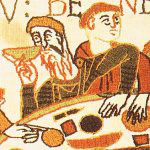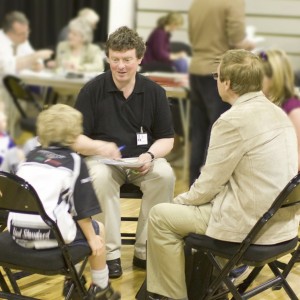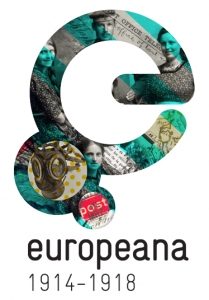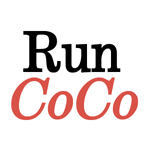Creating a collection through online crowdsourcing and personal interaction.
The Oxford Community Collection Model is used to create collections by combining large-scale online crowd-sourcing with personal, individual interaction. The model allows contributors to choose the way they contribute to a collection, offering those who lack the resources, ability, or opportunity to use computers an opportunity to be part of a digital initiative, sharing their material with the world.
The Great War Archive – the first but not the last
The Oxford Community Collection Model was first used for the Great War Archive in 2008.This 4-month pilot project trialled the model, inviting people to contribute to a collection either by visiting a website or by taking part in a public participation event, called ‘open day’.
The initial pilot project proved very successful and created a collection of over 6,500 items contributed by the general public. Every item originates from, or relates to, someone’s experience of the First World War, either abroad or at home. The collection is freely available for educational purposes and can be found at http://www.thegreatwararchive.org/.
The Great War Archive was highly commended at the Times Higher Educational Awards 2008 for ‘Outstanding ICT Initiative’
From pilot project to large-scale, international collaboration
The Oxford Community Collection Model has since been used for other initiatives, including the large international Europeana 1914-1918 project. In this initiative, people are invited to upload stories relating to the First World War onto a multi-language website together with images of any letters, pictures, objects or other memorabilia they hold (http://europeana1914-1918.eu/). The stories and images are added to a growing collection, which is freely available for reuse under a Creative Commons Licence (CC-BY-SA).
In addition to the online collection, Europeana 1914-1918 also runs a series of public events, called ‘Roadshows’ where members of the public are invited to share their stories and have their material digitised and added to the collection. Roadshows followed by national collection campaigns have been held in in Luxemburg, Ireland, Denmark, Slovenia, Germany, Cyprus, Belgium, and Italy with future events planned in Rumania, Slovakia, and several other countries.
Interaction in different ways
Another project successfully employing the Oxford Community Collection Model is the Woruldhord project (2011). The project aimed to create a collection of freely reusable educational resources to help people study or teach the period of English history centred on the Anglo-Saxons, or Old English (literature and language).
Like other community collection project, Woruldhord collected contributions via a website and through personal interaction. What made this project slightly different was that instead of running public collection days, the project team liaised with organisations, institutions and individuals that were known to hold relevant material. These were invited to contribute to the project via the public website, but also offered assistance in different ways, for example by the project team uploading the material, where needed digitising or converting it to a different format first.
Over the course of one summer, the project collected about 4,500 digital objects contributed by about 400 people or institutions. The archive contains photographs, documents, presentations, databases, and more; covering objects, archaeological sites, poems, prose writings, and course material, all to be freely reused for educational purposes under a Creative Commons Licence (CC-BY-NC-SA). The project is still accepting contributions via the project website http://projects.oucs.ox.ac.uk/woruldhord/.
The Woruldhord project showed that the Oxford Community Collection Model can be successfully used without running big collection events as long as there is interaction with the community.
A, B, C : ‘crowd-source’ with sustainable success
Being part of and interacting with a community is a central feature of the Oxford Community Collection Model. This is described and discussed in more detail in RunCoCo: How to Run a Community Collection Online (2011), a report which presents a simple A, B, C of advice for projects and groups who aim to ‘crowd-source’ with sustainable success:
- Aim for Two-way engagement;
- Be part of your community;
- Challenge your assumptions.
The Report was written by the JISC-funded RunCoCo project (RunCoCo – how to run a community collection online http://runcoco.oucs.ox.ac.uk/ ) and is freely available at http://runcoco.oucs.ox.ac.uk/resources/RunCoCo_Report.pdf .
Further information, advice and support available
RunCoCo offers advice, training, and support to those looking for new ways of working with the public for impact, outreach, and engagement. The RunCoCo team has been involved in planning, setting up, and running a series of community collections using the Oxford Community Collection Model and can advise and assist in a variety of ways. For more information, contact runcoco@it.ox.ac.uk




[…] Berglund Prytz, Ylva (2013), ‘The Oxford Community Collection Model’ http://blogs.it.ox.ac.uk/runcoco/2013/06/24/the-oxford-community-collection-model/ ‘A Postcard from Hitler’ http://youtu.be/wsUnCAPwv90 (video in university annual […]
[…] my time at Oxford I was thinking of the Oxford Community Collection model. This is a model of working we developed to support any organisation in creating a shared […]